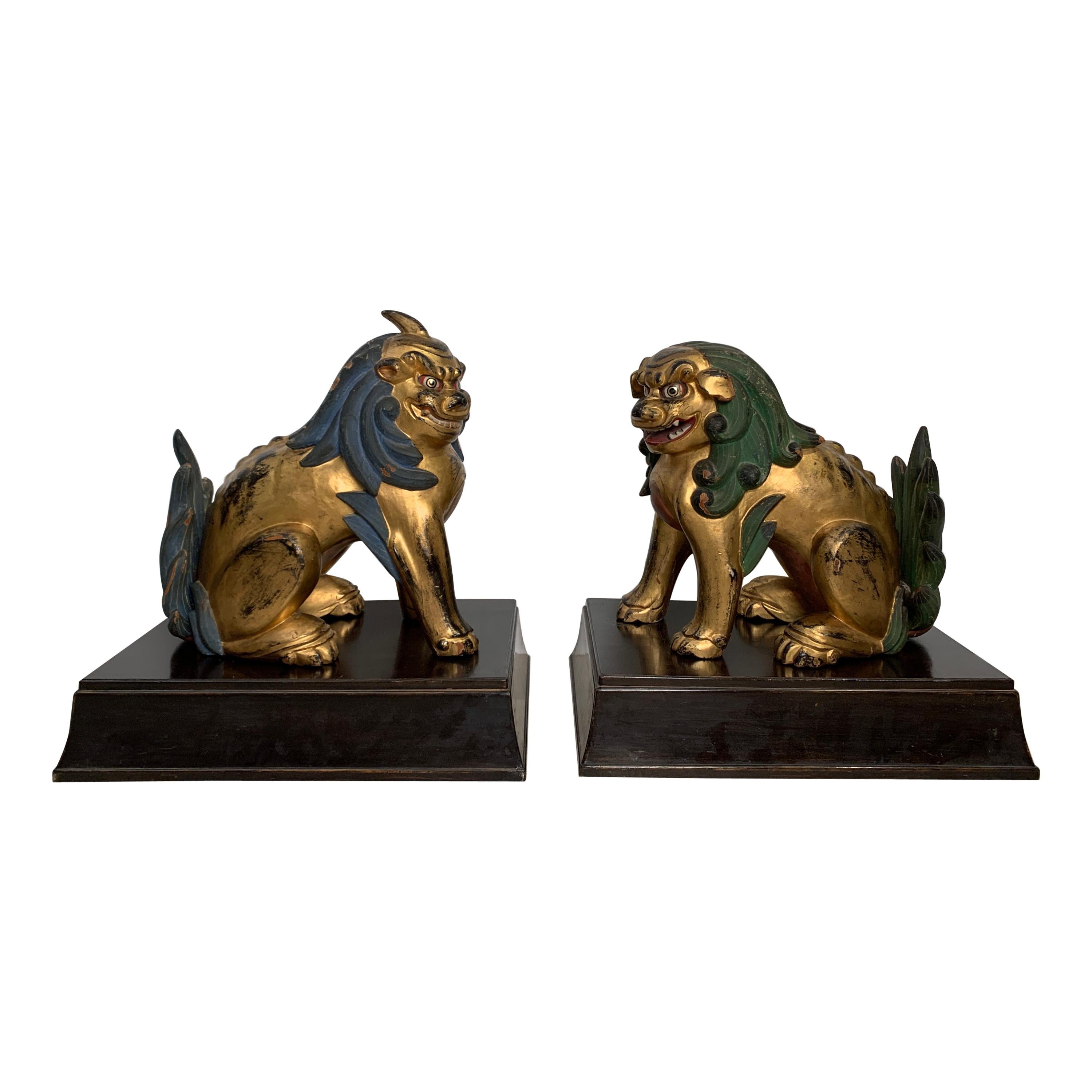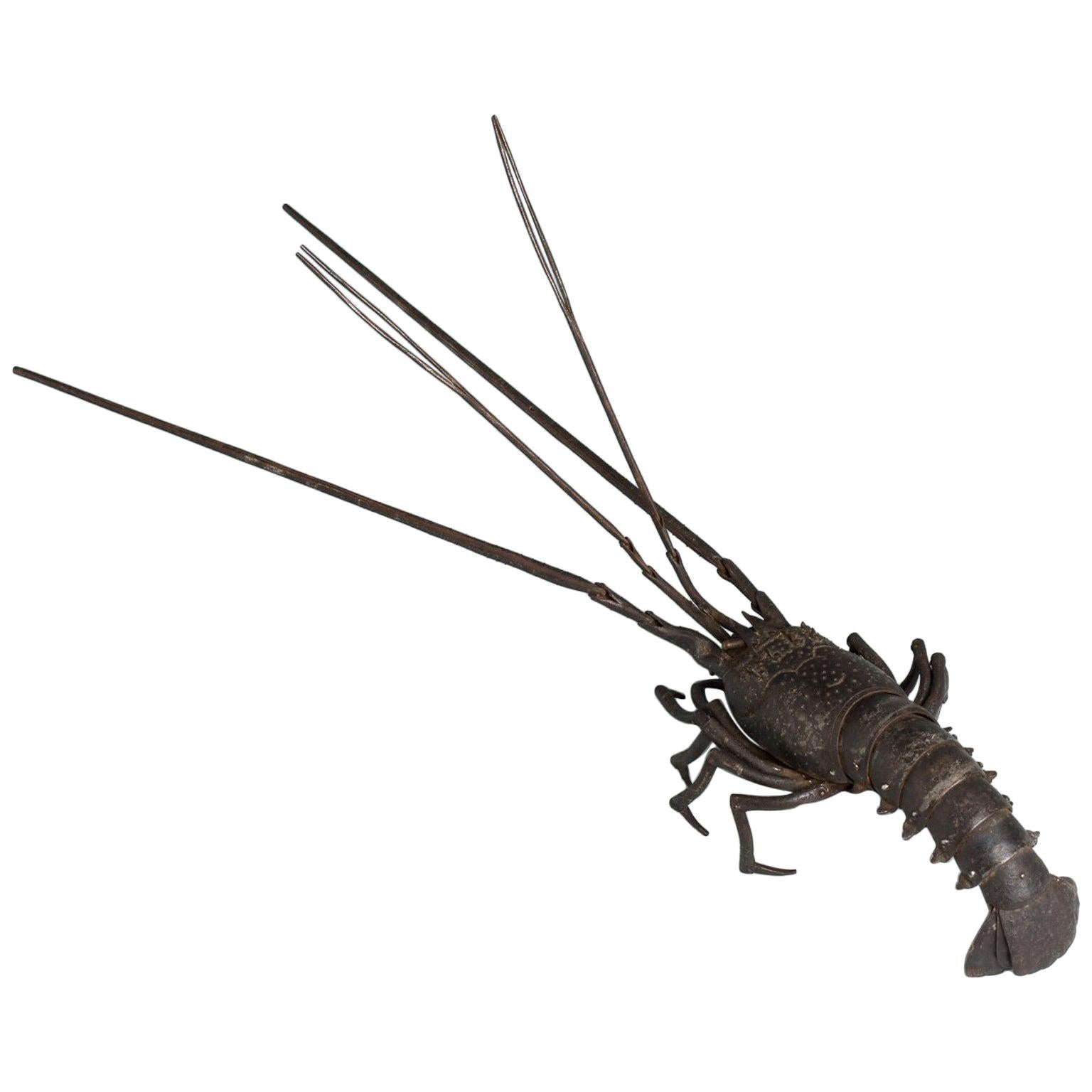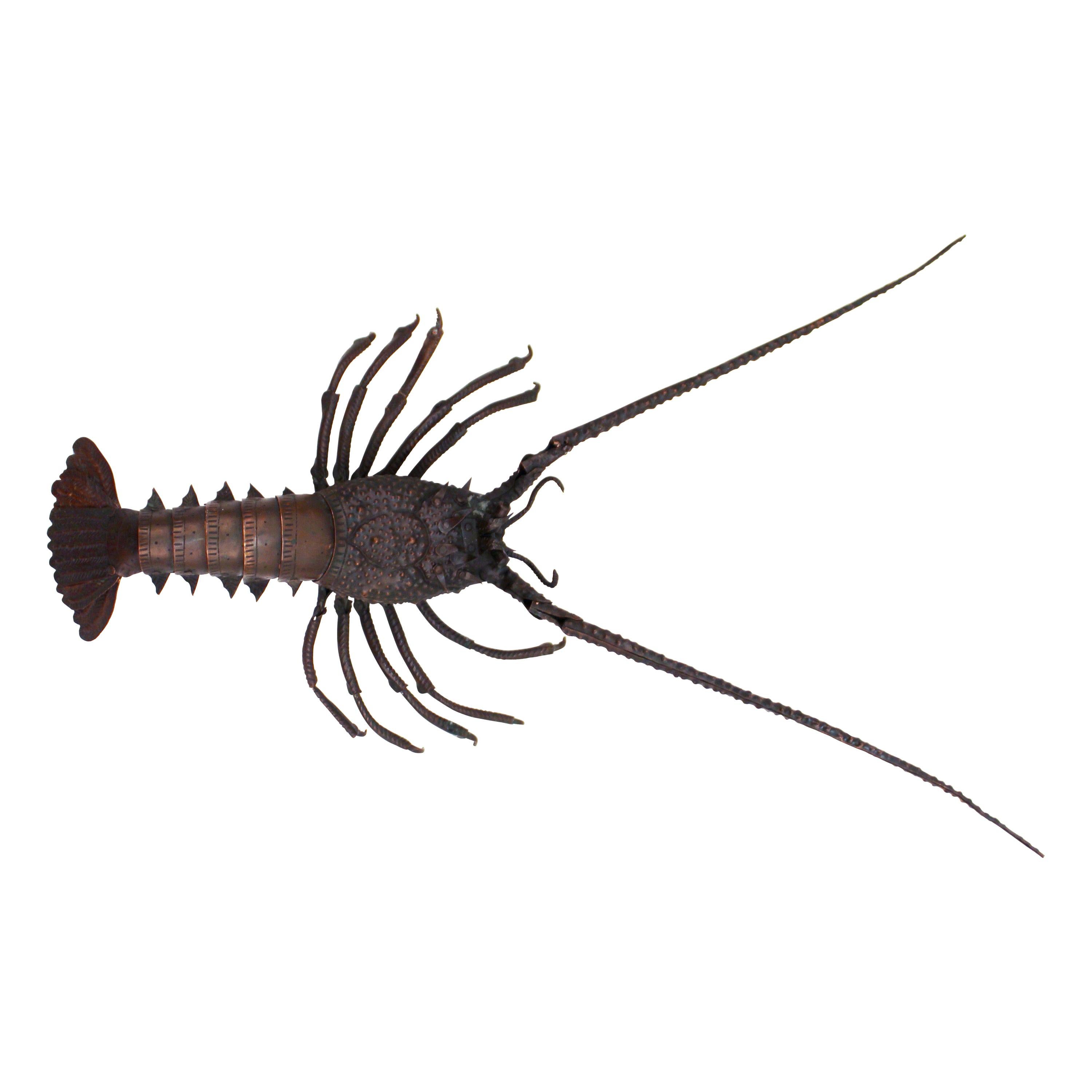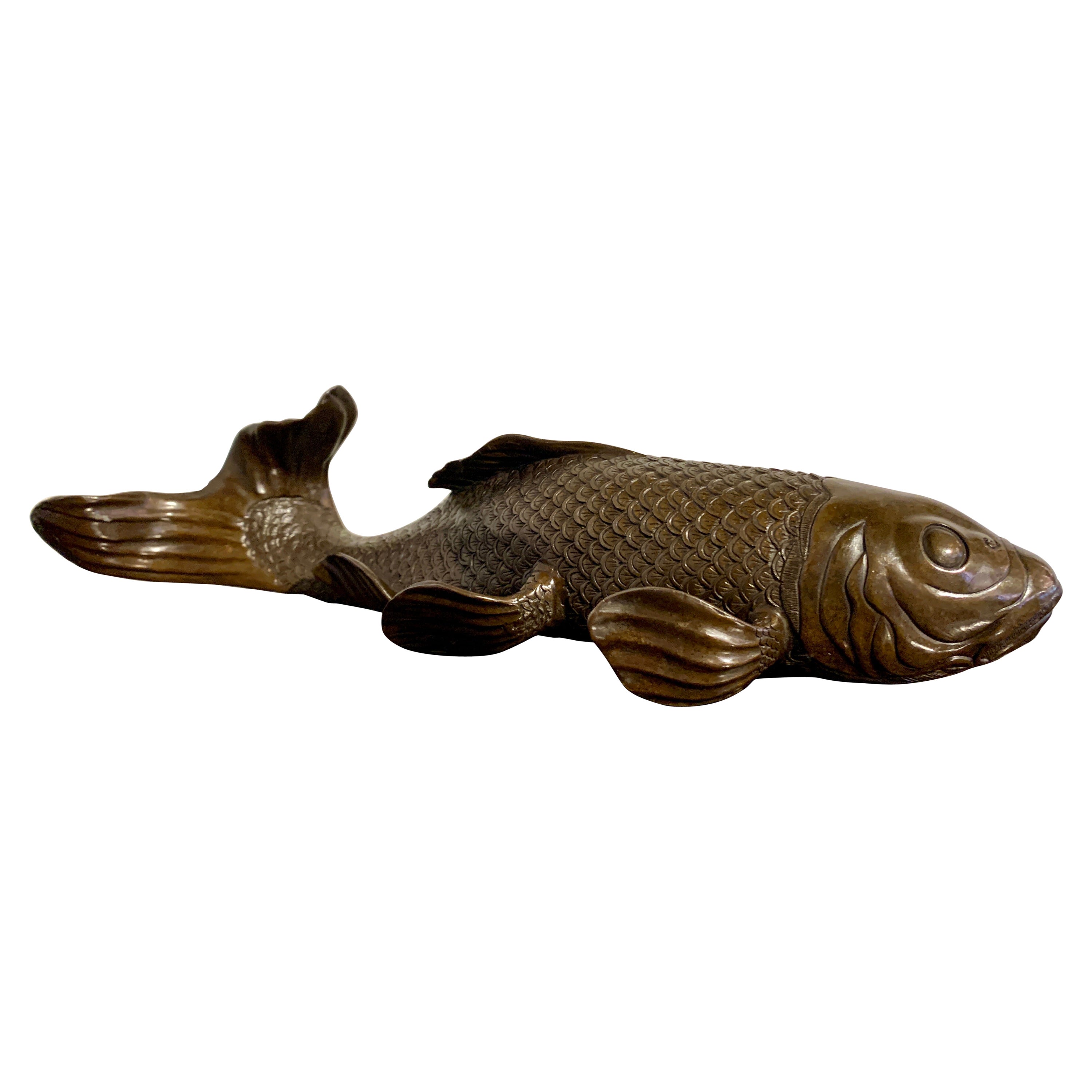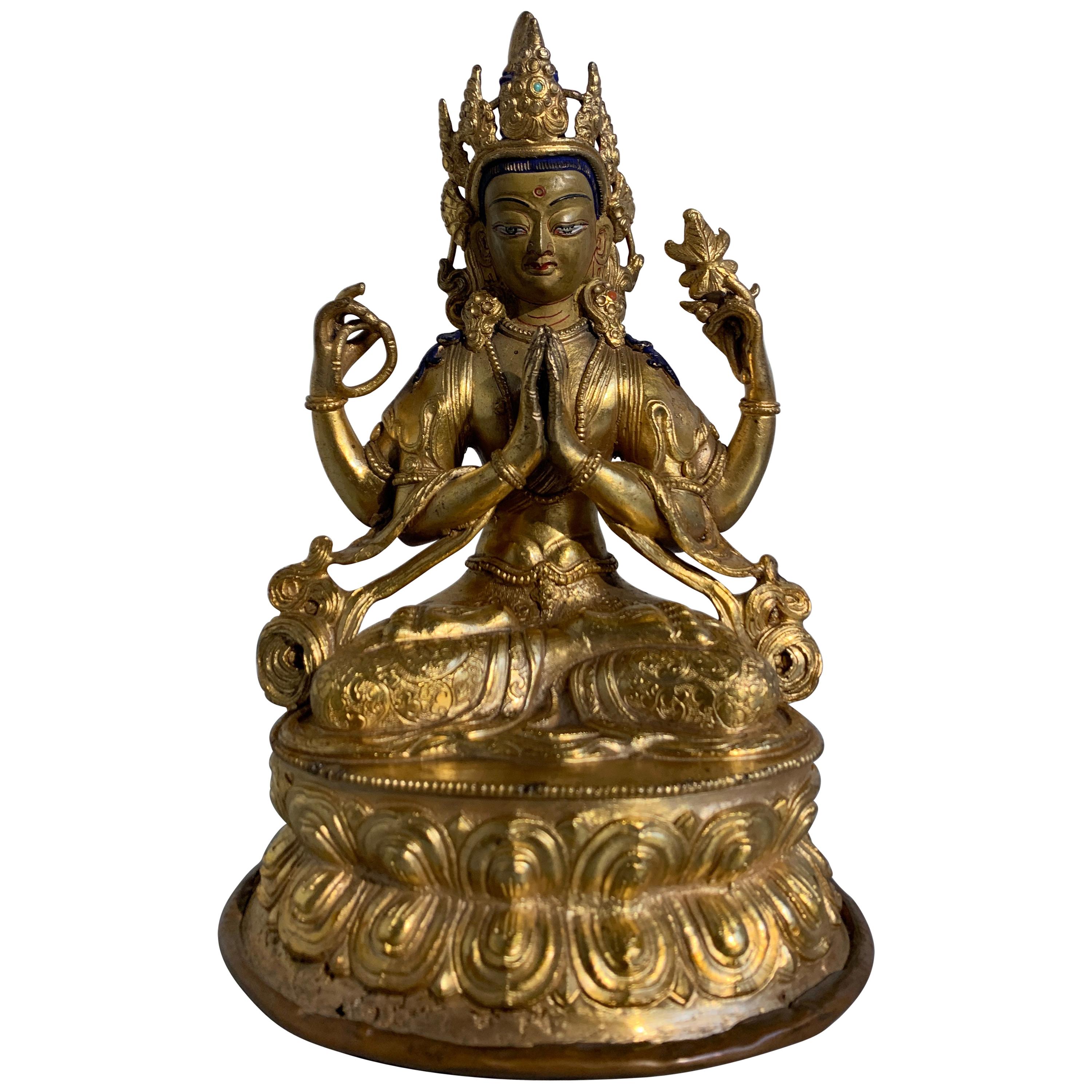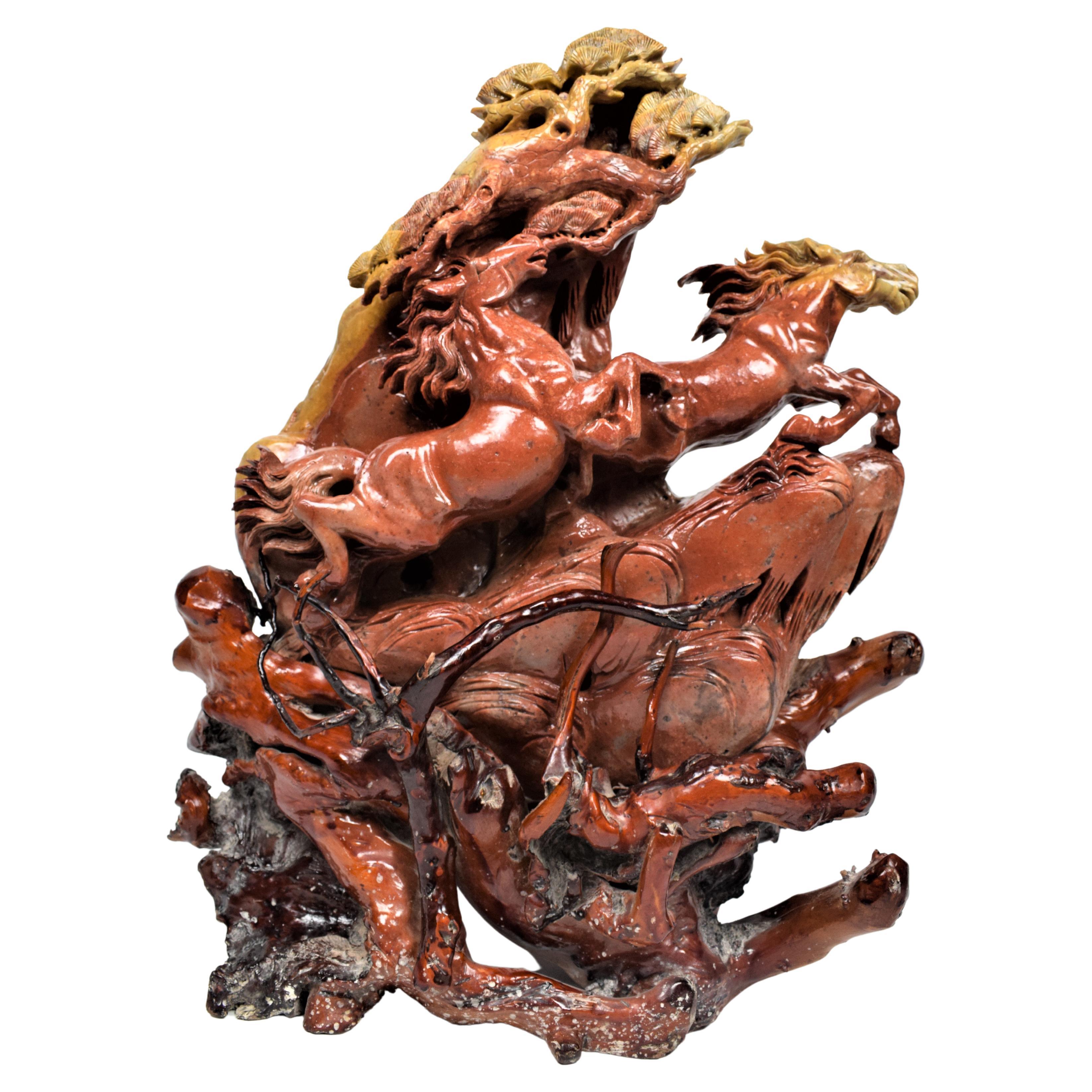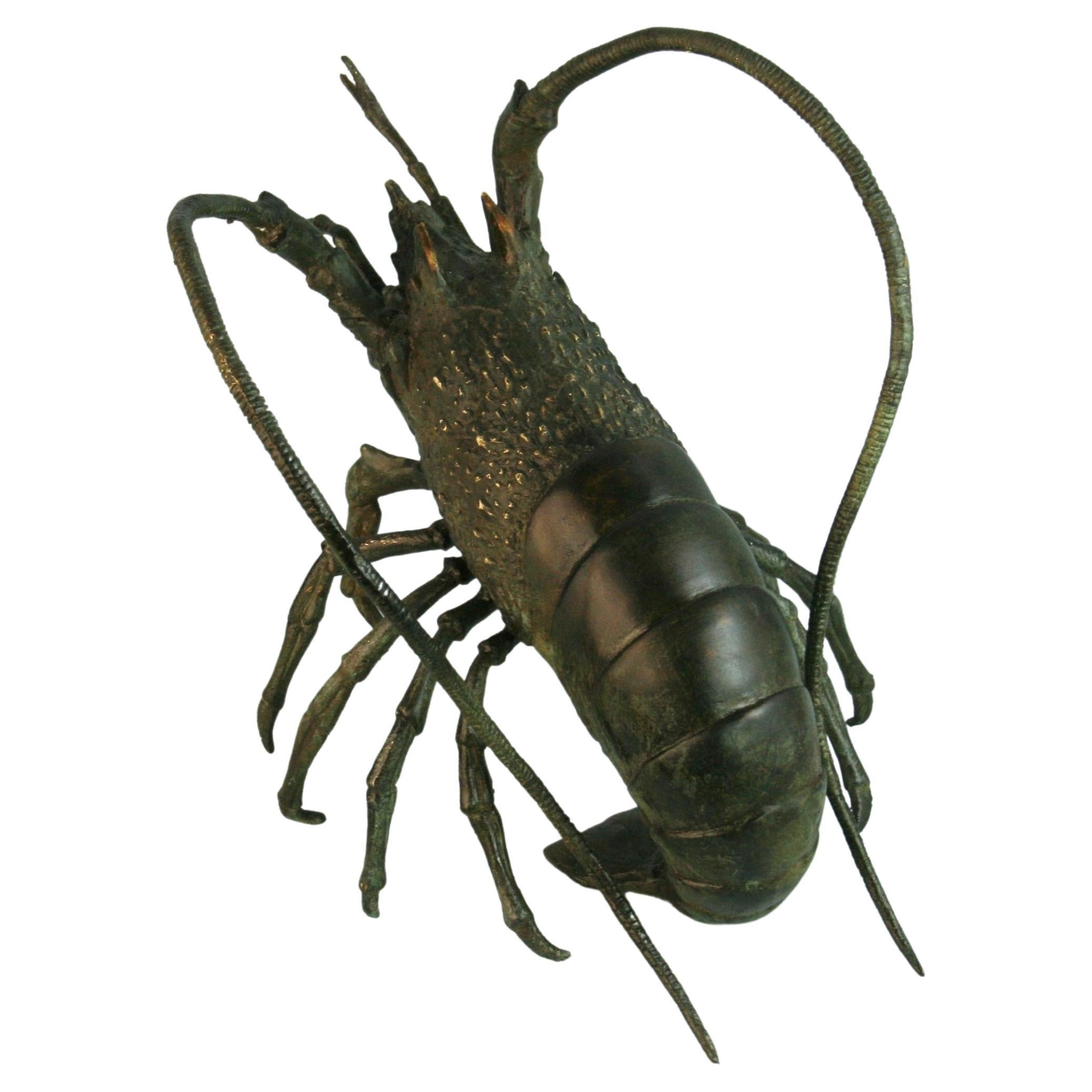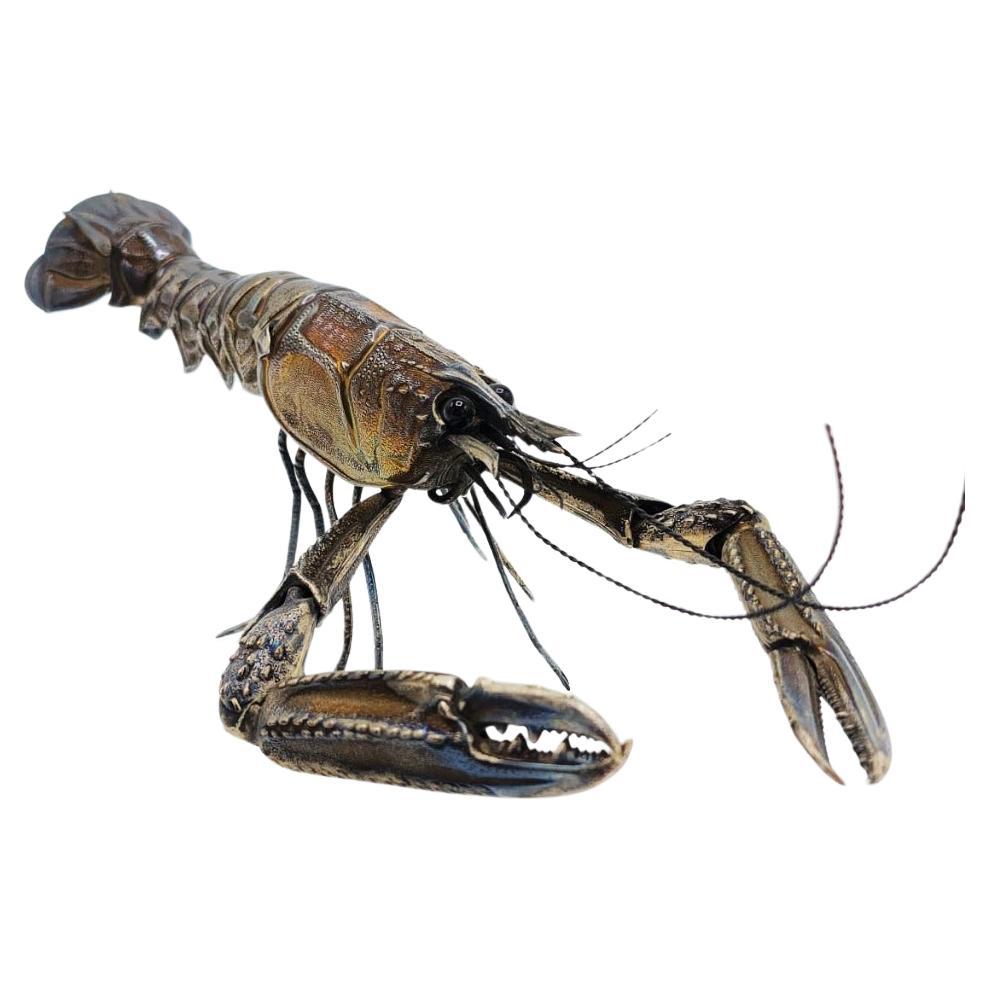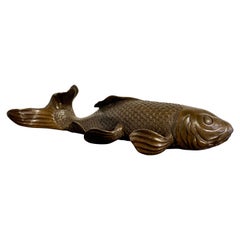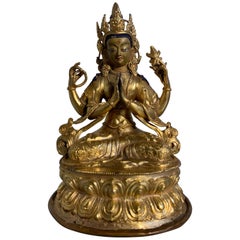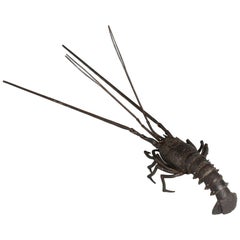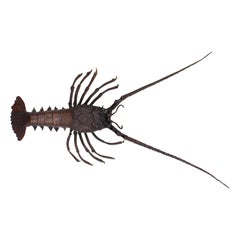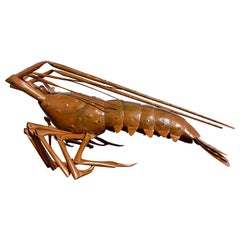
Japanese Articulated Model of a Lobster, by Myochin Muneyuki, Mid 20th Century
View Similar Items
Want more images or videos?
Request additional images or videos from the seller
1 of 10
Japanese Articulated Model of a Lobster, by Myochin Muneyuki, Mid 20th Century
About the Item
- Dimensions:Height: 3.75 in (9.53 cm)Width: 10.75 in (27.31 cm)Depth: 4.5 in (11.43 cm)
- Style:Showa (Of the Period)
- Materials and Techniques:
- Place of Origin:
- Period:
- Date of Manufacture:circa 1950s
- Condition:Wear consistent with age and use. Minor fading. In very good condition. The antennae slightly bent and dented. The copper with some discoloration. One outer tail fan with significant discoloration. The ribbon on the tomobako slightly frayed.
- Seller Location:Austin, TX
- Reference Number:1stDibs: LU894724234572
About the Seller
5.0
Platinum Seller
These expertly vetted sellers are 1stDibs' most experienced sellers and are rated highest by our customers.
Established in 2001
1stDibs seller since 2010
305 sales on 1stDibs
Typical response time: 1 hour
More From This SellerView All
- Pair of Japanese Gilt Wood Komainu, Guardian Lions, Early 20th Century, JapanLocated in Austin, TXA charming and mischievous pair of Japanese carved, gilt and painted komainu, often mistaken for foo dogs or foo lions, Showa Period, 1920's, Japan. The two komainu, or guardian lions, are portrayed seated upon their haunches, heads slightly turned. The two beasts are well carved, with wonderful musculature, flowing manes, and bushy tails. Their faces a mix of ferocious and comical. The eyes of reverse painted glass with gilt highlights. One is a true komainu, (lion-dog), with a horn on its head, and its mouth closed. The other is a shishi, (lion), with its mouth open, and no horn. The komainu sports a mane and tail pigmented blue with gilt highlights. The shishi sports a mane and tail pigmented green with gilt highlights. Both figures richly gilt in gold lacquer. Komainu are protective beings, similar to foo lions or foo dogs...Category
Vintage 1920s Japanese Showa Sculptures and Carvings
MaterialsGlass, Cypress, Wood
- Japanese Bronze Okimono of a Carp, Taisho Period, Early 20th Century, JapanLocated in Austin, TXAn elegant Japanese cast bronze okimono of a swimming carp, Taisho Period (1912 - 1926), early 20th century, Japan. The graceful fish portrayed realistically in motion, as if swimmi...Category
Vintage 1920s Japanese Taisho Sculptures and Carvings
MaterialsBronze
- Nepalese Gilt Bronze Figure of Bodhisattva Chenrezig, Mid-20th CenturyLocated in Austin, TXA nice vintage early to mid-20th century gilt bronze sculpture of the Buddhist deity Avalokiteshvara in his four armed form, known as Chaturbuhja, or Chenrezig in Tibet. Chenrezig, a form of Avalokiteshvara, the bodhisattva of compassion (known as Guan Yin or Kwan Yin in Chinese), sits in vajrasana upon a high double lotus pedestal. One pair of hands is clasped in prayer at heart level, the other pair of hands raised upwards at shoulder lever and holding discreet attributes, a mala (prayer beads) in one hand, a lotus blossom in the other. Chenrezig is dressed in an elaborately patterned floral dhoti that covers his lower half. His torso bare, shoulders covered with a shawl and scarves that billow out around him. He is festooned with jewels, necklaces, bracelets, armlets, earrings, belt and a five pointed crown. The earrings studded with coral. The crown studded with turquoise. His face is cold painted with beautiful details. The hair has been pigmented blue with crushed lapis, indicating his peaceful nature. The copper base plate is inscribed with a visvajra (double vajra...Category
Late 20th Century Nepalese Tibetan Sculptures and Carvings
MaterialsCoral, Lapis Lazuli, Bronze
- Khmer Style Bronze Figure of a Standing Buddha, Mid-20th Century, ThailandLocated in Austin, TXA lovely vintage Khmer style cast and patinated bronze figure of a standing Buddha, mid-20th century, Thailand or Cambodia. The Buddha is portrayed standing upright upon a low, p...Category
Mid-20th Century Thai Sculptures and Carvings
MaterialsBronze
- Nepalese Gilt Bronze Buddhist Figure of Manjushri, Early to Mid-20th CenturyLocated in Austin, TXA lovely Nepalese gilt bronze figure of Manjushri, the Bodhisattva of Wisdom, early to mid 20th century. The Bodhisattva of Transcendent Wisdom ...Category
Mid-20th Century Nepalese Tibetan Sculptures and Carvings
MaterialsLapis Lazuli, Bronze
- Nepalese Gilt Bronze Bodhisattva 'Amoghapasha?', Early to Mid-20th CenturyLocated in Austin, TXA beautiful and unusual gilt bronze figure of a Bodhisattva, possibly Amoghapasha, Nepal, early to mid-20th century, circa 1930s or 1940s. The regal figure possibly depicting the bodhisattva Amoghapasha, the Unfailing Lasso. The enlightened being is portrayed seated upon a high double lotus pedestal. He is dressed as an Indian prince, wearing a luxurious foliate patterned dhoti around his waist and a billowing scarf around his shoulders. . His torso bare save for the jeweled necklaces and the sacred thread. A five pointed crown with an image of Amitabha Buddha in the central point graces his head. His princely face cold painted with beautiful detail, his hair colored blue with crushed lapis lazuli, indicating his peaceful nature. Amoghapasha holds a lasso in one hand, an axe in the other. He is considered an emanation of Avalokiteshvara. A bodhisattva of compassion, Amoghapasha is so named because of the lasso he holds in his hand. The lasso represents his vast compassion which is thought to extend to encompass all beings, bringing them into a state of perfection and enlightenment. The copper base plate, seemingly a later replacement, has been inscribed with a visvajra (double vajra...Category
Mid-20th Century Nepalese Tibetan Sculptures and Carvings
MaterialsLapis Lazuli, Bronze
You May Also Like
- Japanese Articulated Iron Jizai Okimono of a Lobster by Myochin MuneharuLocated in Milano, ITThis articulated okimono represents a naturalistically rendered lobster, with fully articulated limbs, antennae, body, and tail and comes with an inscribed wood storage box. Signed:...Category
Antique 19th Century Japanese Metalwork
MaterialsIron
- Myochin Style Hiroyoshi Japanese Edo Articulated Metal Rock LobsterBy Myochin HiroyoshiLocated in New York, NYJapanese Edo period articulated rock lobster made of copper, bronze and iron and signed 'Hiroyoshi' on the bottom. Made in the early 20th century (late Meiji/early Taisho period), the piece has articulated limbs, antennae, body and tail. A superb example of the Myochin style. The Myochins were a distinguished family of samurai armorers. As military conflict in Japan abated in the early 17th century and samurai warriors became courtiers, bureaucrats and administrators, the armorers were compelled to adapt their skills by making articulated sculptures...Category
Early 20th Century Japanese Meiji Metalwork
MaterialsBronze, Copper, Iron
- Night stand model "Xai" by Salvador Dalí 20th century surrealist spanish designBy (after) Salvador DaliLocated in Barcelona, ESDesign inspired on an artwork by Salvador Dali´: Interpretation project for a stable-library, 1942 Stuffed lamb, elaborated with a technique by a taxidermist. Drawer and table top in...Category
21st Century and Contemporary Spanish Modern Animal Sculptures
MaterialsBrass
- Reclaimed Wood Tofu Grinder Sculpture, Mid 20th CenturyLocated in New York, NYA unique tofu grinder sculpture, hand-carved out of a single large piece of reclaimed wood. From Indonesia, circa 1950. Original untouched color. The holes in the back can be used fo...Category
Vintage 1950s Indonesian Tribal Natural Specimens
MaterialsReclaimed Wood
$1,755 Sale Price35% Off - Chinese Soapstone Carving Running Horses, Mid-20th CenturyLocated in Islamabad, PKChinese soapstone carving running horses, Mid-20th Century. The large magnificent soapstone carving is depicting running horses beautifully carved in the natural soapstone placed on a wooden root branch. Galloping horses in Chinese culture symbolize upwardly movement which could mean a promotion or growth in career Shoushan stone...Category
Mid-20th Century Chinese Sculptures and Carvings
MaterialsSoapstone
- Japanese Antique Bronze Jumbo LobsterLocated in Douglas Manor, NY1228 A fine bronze jumbo sculpture of an animated lobster.Category
Vintage 1940s Sculptures and Carvings
MaterialsBronze
$675 Sale Price30% Off
Recently Viewed
View AllMore Ways To Browse
The Lobster
Metal Lobster
Japanese Mid Century Sculpture
Wood Carving Set
Wood Carving Of The Head
Copper Sheet
Lobster Signs
Box Wood Carving
Articulated Model
Articulated Wood
Retro Carving Sets
Retro Carving Set
Articulated Sculpture
Hammer Head
Vintage Wood Hammer
Japanese Metal Sculpture
Dragon Carving
Mid Century Insects
